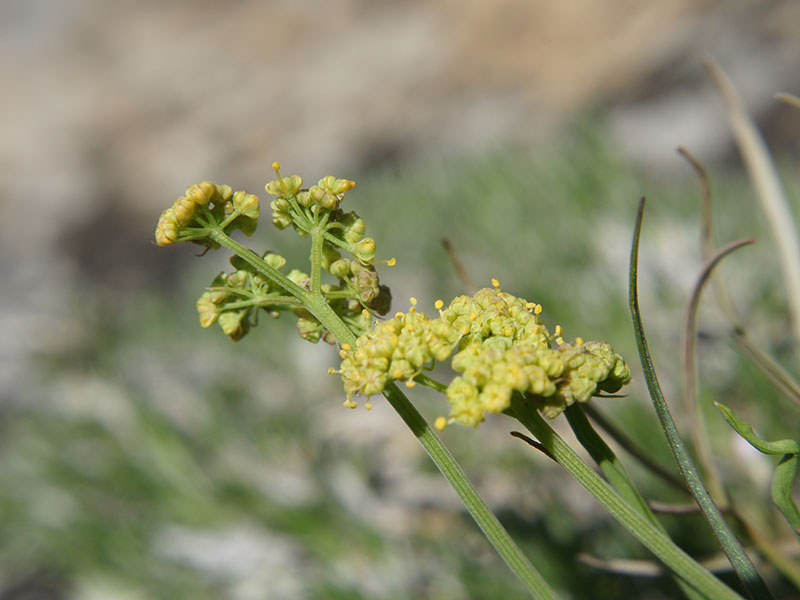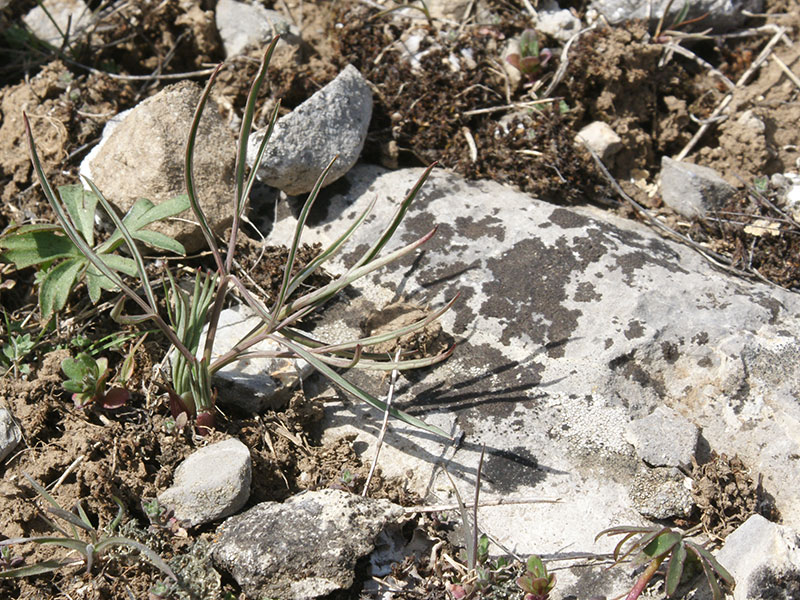Lomatium triternatum / nineleaf biscuitroot
- flowers soon after snowmelt
- yellow compound umbel on leafless stem
- leaves are three-fold compound; leaflets grass-like
- may be tall with wide umbels on good soil
- may be very short with small umbels on rocky, sandy, low nutrient soil
Also known as: narrowleaf desert-parsley
Nineleaf biscuitroot is one of more than 70 species of Lomatium in the western US and is found in a wide variety of habitats. In the Valley, however, I have so far discovered if only in a dry, rocky, sagebrush area where it is only a few inches tall and exposed.
L triternatum is a hairy perennial that grows from a deep (for the plant) taproot. Some plants have been known to live for more than 20 years. It is most likely to be seen or recognized when it is in flower – soon after snowmelt in early spring. By mid-summer, it is dormant and likely gone from above the earth or at least doing a great impression of being dead.
Like at least some other species in the genus, including L. dissectum in the Valley, the inflorescence of nineleaf biscuitroot is a compound umbel; the flowers are yellow and the anthers extend well beyond the corona. The stalks of the umbels have no leaves and no distinctive bracts. Initially each compound umbel is very tight but the rays supporting the secondary umbels (umbellets) extend as the inflorescence matures to the point that the individual umbellets are separated by several times their diameters… like the ribs of an umbrella.
Overall, the full umbels contain between 50 and 200 flowers with an interesting sexual arrangement; individual flowers are either male or hermaphrodites. The hermaphrodites are self-fertile, but still are more likely to produce seeds if visited by pollinators. The insects that perform this are more or less specialists to this plant, being mostly species of “mining bees“.
While it is difficult to tell species apart by their flowers, in this case, the leaves assist considerably. Each leaf proper is divided into three leaflets. Each of these is again subdivided into three linear, leaflike segments. This arrangement is called “ternate pinnately compound” and is the reason for the specific name, triternatum as well as for the common name – nineleaf (=3×3). If you happen to be lying on the ground examining something else already in flower and you see the young plant and its leaves, it is quite attractive and distinctive. There is a photo of one such plant in the gallery.
Reportedly, nineleaf biscuitroot can grow to 3 feet tall and the umbels can be 4 inches across. It can also grow in dense groves. In such cases, if there is enough of it, it can provide important forage for wildlife. Its large taproot makes it resistant to grazing, trampling, drought and fire. On rocks in a dry sage area, it may not reach more than a couple inches tall before flowering. Even in that case, however, It can be an important source of pollen for early insects.
The starchy taproots are edible (but it is unclear if they are actually tasty), cooked, raw or ground as flour… again, if you could get enough of them and with the standard disclaimer about what your mom said about putting things into your mouth that you aren’t really sure of. For example, it might help to know that pounded roots have also been used to poison fish.
For now, I have enjoyed seeing small ones in amongst its congenitur, L. dissectum (fernleaf biscuitroot).
| Color | |
|---|---|
| Family | |
| Blossom size | |
| Inflorescence size | |
| Inflorescence type | |
| When? | |
| Where? |





